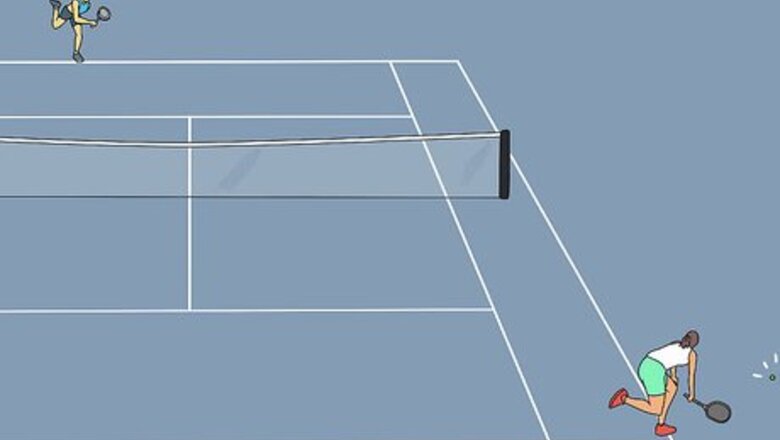
views
Scoring a Tennis Match
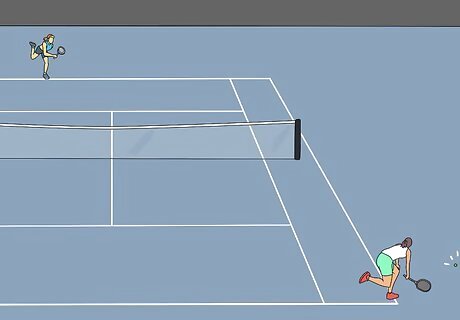
Hit a ball that your opponent can’t return to score a point. If your opponent hits the ball into the net or out of bounds during play, you score a point. If your opponent cannot get the ball in the service box on their 1st or 2nd serve attempt, you also score a point. The service boxes are the 4 squares next to the net. When serving, hit the ball over the net and into the service box that is diagonal from where you’re standing. If the ball grazes the top of the net on a serve then lands in the service box, the server redoes the serve. This is known as a “let”, and neither side wins a point.
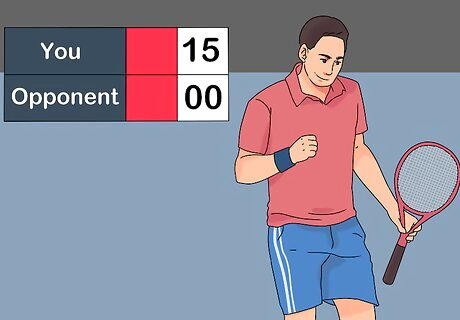
Score a minimum of 4 points and have a 2-point advantage to win a game. The scoring in tennis is a little weirder than in other sports. Each game starts at “love,” which just means 0. When you score your 1st point, you’ll have 15. The 2nd point then takes you to 30, and the 3rd point to 40. If you score a 4th point, you’ll win the game, as long as your opponent’s score is below 40. To win a game, you must have a 2-point advantage over your opponent. Whoever is serving during the game will announce the score before the serve. When announcing the score, say your score 1st and then your opponent’s. If you have 40 and your opponent has 15, for example, say: “40-15.”
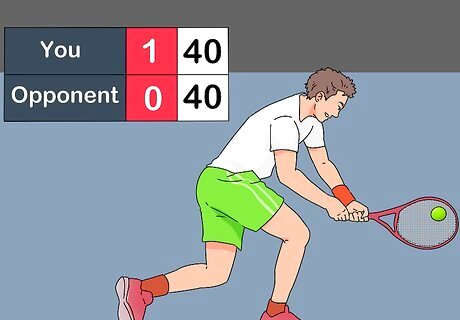
Pull ahead of your opponent by 2 points to win if the score is tied at 40-40. A tied score of 40-40 is known as “deuce.” If this happens, you cannot win by scoring a 4th point. Instead, you must score 2 consecutive points to win the game. If you go up by 1 point after a deuce you’ll have the “Advantage,” or “Ad.” If the server goes up by 1 point after a deuce, they’ll announce the score as “Ad-In.” If the receiver goes up by 1 point, the server will announce the score as “Ad-Out”
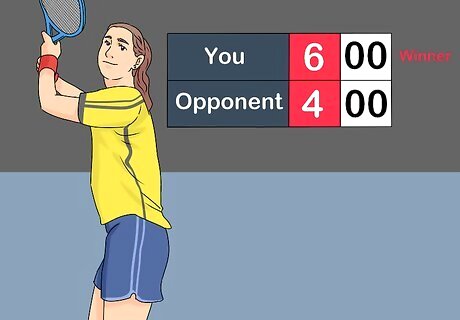
Defeat your opponent in at least 6 games to win a set. If you’re the 1st player to win 6 games, you’ll win the set, as long as you’re ahead of your opponent by 2 games. If you’re tied with your opponent at 5-5, you can only win the set if you go up by 2 games. For example, if the game is tied at 5-5, you could take the set if you win the next 2 games for a final score of 7-5. If you and your opponent are tied at 6-6, you’ll play 1 last game. The first player to reach 7 points and be ahead by at least 2 points, will win this tiebreaker and the set.
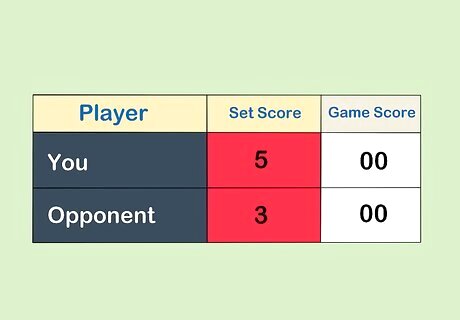
Win the most sets to win a match. A tennis match can have a maximum number of 3 or 5 sets. If you’re playing in a best-of-5 match, you’ll need to win 3 sets to win the match. In a best-of-3 match, on the other hand, you’ll have to win 2 sets to take the match. In Davis Cup and Grand Slam play, male professionals play in matches that are best of 5 sets. Most tennis matches, including all professional women’s matches, have a maximum of 3 sets per match.
Getting Ready for a Match
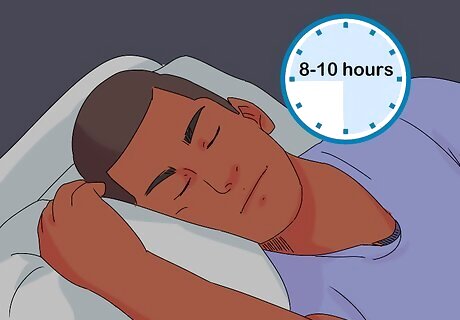
Get plenty of sleep so you're ready to give your all on match day. A proper night’s sleep can easily be the difference between defeat and victory if you and your opponent are at the same skill level. If you’re under 12 years of age, try to get 9-12 hours of sleep in a 24-hour period. Shoot for 8-10 hours per night if you’re a teenager and 7 or more hours if you’re over 18 years of age. Try to keep your sleep cycle consistent by going to bed and waking up at the same time every day. If you’re traveling for a tennis match, try to make your sleeping environment as similar to what you’re used to as possible. For example, set the temperature in the room to what you’re used to and take along pillows and/or blankets from home. Taking naps throughout the day can also help keep you relaxed and focused.
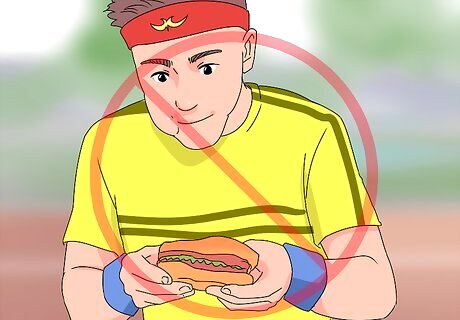
Avoid eating new types of food before your match. In the hours and days before your match, stick to nutritious foods that you’re familiar with. There’s always the risk that a new type of food will cause digestive or other problems that may negatively affect your play, so play it safe. If you want to introduce a new food or ingredient into your diet, do so several days before you play your match so your body has time to properly adjust.
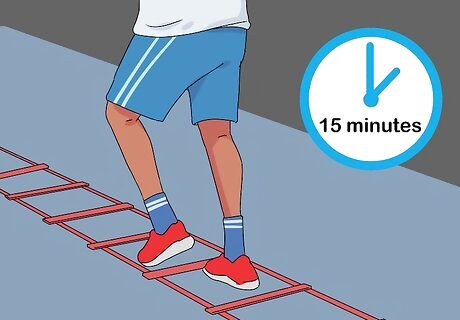
Warm up properly to prepare your body for the match. Start your warm up by doing 15 minutes of stretches, sprints, quick feet drills, and reaction drills. Then, do a 30-45-minute technical warm up to practice your serves, forehands, backhands, etc. As you warm up, remember to practice as if you’re playing a match. This means practicing your between-points routines in addition to your serves and forehands.
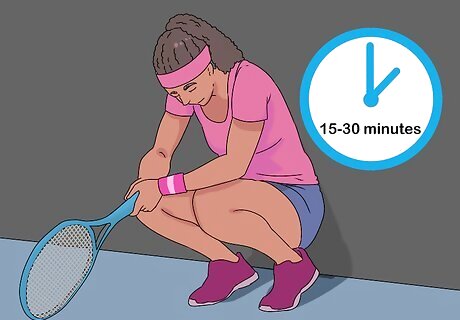
Prepare yourself mentally so you enter the match focused and relaxed. During the final 15-30 minutes before your match, sit alone in a quiet place and try to visualize your match. Visualize yourself hitting powerful and accurate serves and forehands. Also, try to imagine yourself responding in a confident and relaxed way to adverse situations. During these 15-30 minutes, try to refrain from looking at your phone or any other device so you can stay focused on your upcoming match.
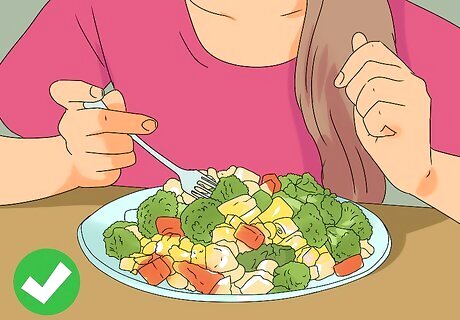
Eat healthy foods before and during your match. Your performance in a tennis match, or any other type of sporting competition, is closely tied to your diet. To play to the best of your ability, be sure to eat a diet comprising lean proteins, whole grains, healthy fats, fruits, and vegetables. Also be sure to eat at proper intervals before and during your tennis match. Eat a balanced meal containing carbs, lean protein, and healthy fats 3-4 hours before your match. This can be something like a sandwich, a breakfast burrito, or a yogurt parfait. Drink a sports drink or eat a snack, like a fuel bar or energy chew, 15-60 minutes before your match begins. Drink a sports drink or eat a snack every hour of your match to refuel your body with carbs. You’ll also want to eat a snack containing carbs and protein within 30 minutes after your match ends to help your body recover.
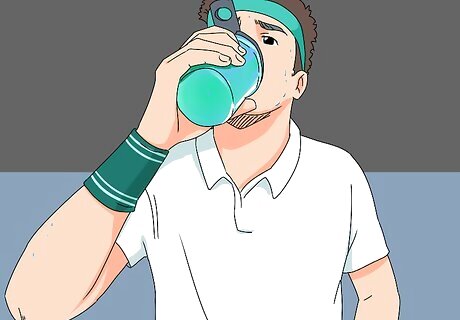
Refuel your body between matches to stay focused and alert. If there’s less than 1 hour between your matches, drink plenty of water or a sports drink to stay hydrated. If more than 1 hour of downtime separates your matches, eat a snack to keep your body at 100 percent. If the break between your matches is 1-2 hours long, eat a small snack, such as a granola bar or banana. If your downtime is longer than 2 hours, be sure to eat a large snack, like a sandwich or a yogurt parfait.
Improving Your Play
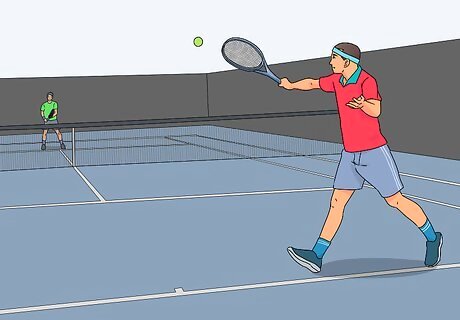
Hit a straight, flat, and fast first serve. Aim your first serve toward the middle line that divides the two service boxes. A fast and flat serve will be difficult for your opponent to return. Practice your first serve often before your match to improve your accuracy.
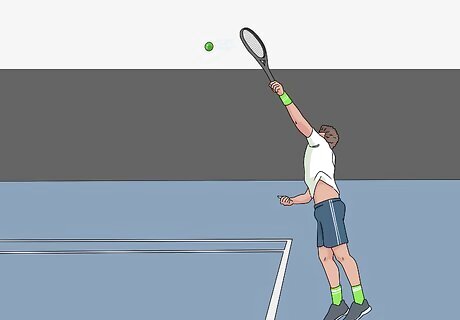
Change the swing path of your second serve, not its speed. If your first serve misses, keep the speed of your second serve the same as your first but aim to the outside of the box rather than the inside. This will increase your margin for error. Many tennis players slow down the swing of their second serve to make sure the ball lands in the service box. A slower serve, however, increases the chance that your opponent will be able to hit a powerful return shot and win the point.
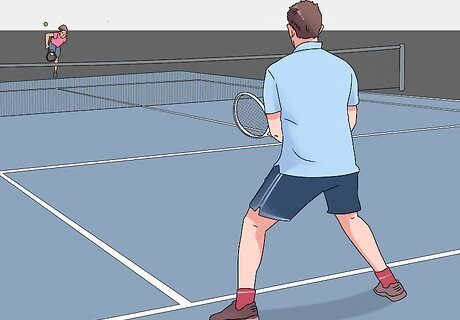
Shift your body weight to your outside leg when returning a serve. When you’re getting ready to return a serve, keep your legs wide apart to give yourself a stable base. Then, shift your weight to the leg on the side you’re hitting on. If you’re right-handed and hitting a forehand shot, for example, shift your weight to your right leg. If you’re right-handed and hitting a backhand shot, shift your weight to your left leg.
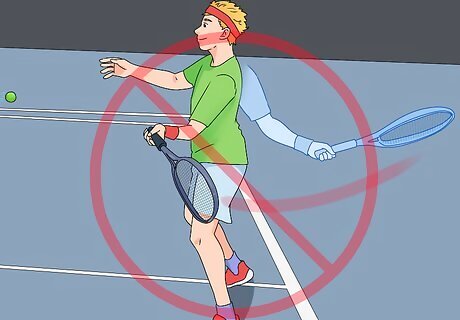
Avoid taking a big swing when returning a serve. Winding up a big swing to return a serve will make it more difficult to properly time your shot. Instead of using a big swing, bring your racket forward to meet the ball. This technique will help increase the percentage of serves that you’re able to return. This is especially important when you’re returning a first serve, since first serves are faster and more difficult to time properly.
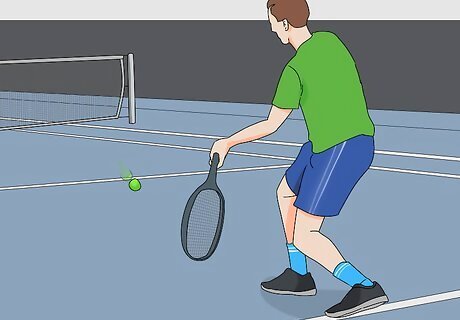
Add volleys to your play to catch your opponent off-guard. If your opponent is slow to move forward or seems to have gotten into a rhythm playing at the baseline, hitting a volley can be a quick and easy way to score a point. Try to aim your volleys to your opponent’s weaker side and keep them as low as you can to reduce the amount of time they have to respond. A volley is when you hit the ball before it hits the ground.
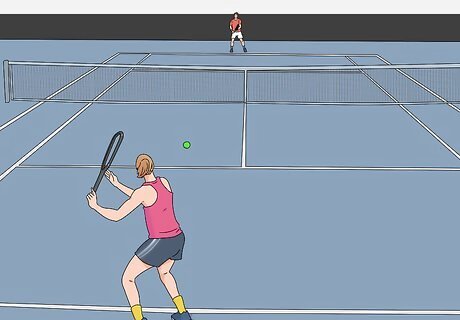
Do what works until it doesn’t work. Pay attention to your opponent’s weaknesses. If you hit a shot that your opponent wasn’t able to return, try to continue hitting that shot. You may have found their weakness and can exploit it to win easy points. The backhand is a common weakness among tennis players, so try to hit some early shots to your opponent’s backhand to see how they respond.
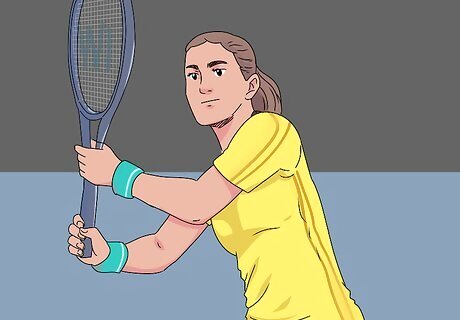
Stay focused by reminding yourself to play 1 point at a time. Try to keep the score of the match out of your mind. Whenever you start to feel frustrated about falling behind or overconfident when you take a lead, just say: “1 point at a time” to yourself to stay focused. Momentum in tennis matches can shift quickly, so try not to become too pessimistic if you fall behind by several games. Focus on the points you win to keep yourself feeling confident.
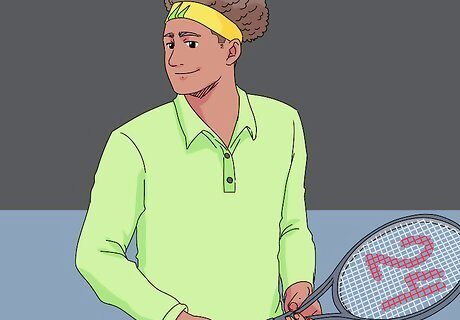
Try to stay positive and avoid self-criticism. Any time you spend mentally criticizing yourself is time you’re not spending focusing on your game or analyzing the weaknesses of your opponent. Remember that everyone makes simple errors in tennis matches. Even professionals miss easy forehand shots sometimes. If you find yourself becoming frustrated, try focusing on a single basic aspect of your game to reorient yourself. This may help distract you from your negative thoughts. Serena Williams Serena Williams, Professional Tennis Player Develop the ability to recover from setbacks. "I really think a champion is defined not by their wins but by how they can recover when they fall."



















Comments
0 comment